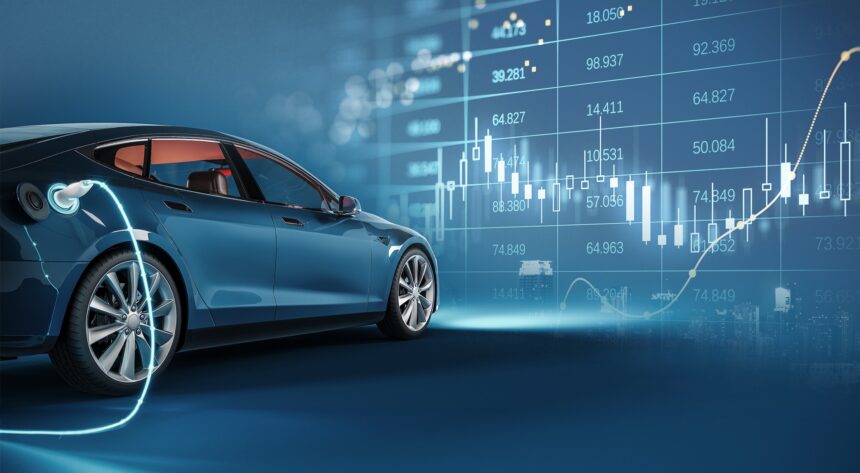The automotive world has seen significant shifts over the years, but perhaps none as impactful as the rise of electric vehicles (EVs). What was once an ambitious vision for an eco-friendly future is now rapidly transforming transportation across the globe. This article will explore the numerous ways EVs are reshaping the automotive landscape, from innovations in technology to economic and environmental impacts.
1. Advancements in Electric Vehicle Technology
Battery Innovations and Efficiency
At the heart of EV evolution is battery technology. Over the past decade, advances in lithium-ion batteries have led to longer-lasting, more affordable, and faster-charging batteries. Companies are also exploring new battery types, like solid-state batteries, which could significantly increase driving range and decrease charge time.
Autonomous Driving Capabilities
- Advertisement -
With the integration of AI and machine learning, many EV manufacturers are advancing towards autonomous driving. Tesla, for instance, has introduced various autonomous features, and other manufacturers are close behind. Self-driving EVs are expected to reduce traffic accidents and improve transportation efficiency, particularly in urban areas.
Vehicle-to-Grid Technology
A lesser-known but exciting feature of some modern EVs is vehicle-to-grid (V2G) capability. V2G enables EVs to transfer power back to the grid, essentially allowing the vehicle to act as a mobile energy storage system. This feature could contribute to energy grid stability, especially during peak hours, making it a valuable tool for sustainable energy solutions.
2. Economic Impact on the Automotive Industry
Shifting Job Market
The rise of EVs is leading to a transformation in the automotive job market. Traditional car manufacturing requires different skills than EV manufacturing, resulting in a demand for workers with expertise in software, battery technology, and electronics. This shift is driving growth in specialized EV training programs and reshaping the automotive workforce.
Changing Supply Chain Dynamics
Electric vehicle manufacturing demands different materials, such as lithium, cobalt, and nickel, for battery production. This shift has influenced global supply chains, with a growing demand for these resources affecting economies around the world. Countries rich in these minerals are experiencing an economic boost, but concerns over ethical mining practices and environmental impacts remain.
Consumer Demand and Government Incentives
Consumer interest in EVs is also growing, fueled by rising fuel prices and environmental awareness. Governments worldwide are offering incentives, such as tax breaks, rebates, and grants, to encourage EV adoption. These incentives have made EVs more accessible to a wider demographic, further fueling the industry’s growth.
3. Environmental Benefits and Challenges

Reduction in Carbon Emissions
One of the most significant benefits of EVs is their potential to reduce carbon emissions. By replacing gasoline-powered engines with electric powertrains, EVs contribute to a cleaner environment by producing zero tailpipe emissions. This reduction in emissions is particularly beneficial in densely populated urban areas where air quality issues are more severe.
Challenges with Battery Disposal
While EVs are less polluting during use, they present environmental challenges at the end of their lifecycle. Battery disposal is a concern due to the toxic elements used in battery production, such as lithium and cobalt. Recycling initiatives are being developed, but the process remains complex and costly.
Sustainable Energy Integration
To maximize environmental benefits, EVs must be charged using renewable energy sources. As the grid transitions to cleaner energy, the positive impact of EVs will further increase. Integrating EV charging stations with solar and wind power is becoming a priority in many regions to create a truly sustainable transportation model.
4. Infrastructure Development for EVs
Expansion of Charging Networks
A robust charging infrastructure is essential for widespread EV adoption. Companies and governments are investing in charging networks to ensure EV owners have convenient access to chargers. Rapid charging stations, which can recharge an EV in 30 minutes or less, are being installed along highways and in urban areas, making long-distance EV travel more feasible.
Urban Planning Adjustments
The rise of EVs is also influencing urban planning. Cities are rethinking infrastructure to accommodate EVs, with parking spaces designated for EV charging, reduced emissions zones, and incentives for using public EV transport. These changes promote EV use in cities, contributing to lower pollution levels and a healthier urban environment.
Integration with Smart Grids
The EV boom has accelerated the development of smart grids, which help manage electricity demand efficiently. Smart grids can communicate with EVs to control charging times, which prevents grid overload during peak hours. This technology plays a vital role in maintaining the balance between energy supply and demand, especially as more EVs hit the road.
5. Impact on Traditional Automotive Manufacturers
Adaptation of Legacy Brands
Traditional automotive manufacturers are making strategic pivots to include EVs in their lineup. Companies like Ford, General Motors, and Volkswagen have committed to EV production, investing billions in R&D and manufacturing plants. For these brands, the shift represents both a challenge and an opportunity to capture the evolving market.
New Market Entrants:
EVs have also opened the door for new players, particularly tech-driven companies. Brands like Tesla, Rivian, and Lucid Motors are setting new standards for EV technology and pushing traditional automakers to innovate. These new entrants focus on technology-first strategies, which appeal to tech-savvy consumers and disrupt established automotive norms.
Partnerships and Acquisitions
Partnerships are becoming more common as automakers seek to share costs and expertise in EV development. Collaborations between car manufacturers, battery producers, and tech companies are streamlining production and enhancing EV capabilities, while some companies are acquiring startups specializing in EV technology.
6. The Future of Electric Vehicles and Transportation
Electric Mobility as a Service
The future may see a rise in electric mobility as a service (eMaaS), with EVs playing a central role in public transportation and car-sharing services. eMaaS can reduce urban congestion and provide affordable, eco-friendly transportation options in cities worldwide.
Wireless Charging Technology
Wireless charging for EVs is emerging as a promising innovation. By embedding wireless charging pads in roads or parking spaces, EVs can charge automatically without needing to be plugged in. This technology could further ease the transition to EVs and improve convenience for drivers.
Potential for Flying Electric Vehicles
Though still in its early stages, companies are experimenting with flying EVs. With major brands like Hyundai and Uber investing in flying taxis, the possibility of airborne EVs could redefine the future of personal and commercial transport.
Electric Vehicles as Catalysts for Change
The shift towards electric vehicles is more than just an automotive trend; it’s a profound transformation affecting multiple aspects of modern society. From technological innovations and economic shifts to environmental impacts and infrastructure changes, EVs are playing a central role in reshaping the transportation landscape. As battery technology advances, infrastructure expands, and government support continues, EVs will likely dominate the automotive industry in the coming decades.
As this shift unfolds, the benefits extend beyond just cleaner transportation they symbolize a commitment to sustainability and innovation that aligns with global goals to reduce carbon emissions and create a cleaner, more connected future.

